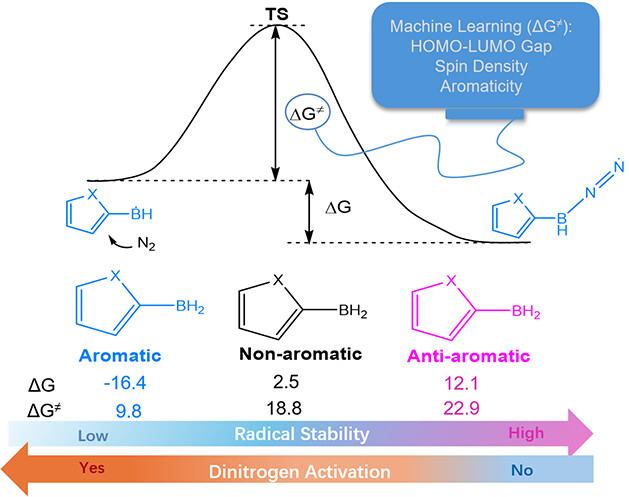Antiaromaticity-Promoted Radical Stability in Boryl Heterocyclics and Its Application to Dinitrogen Activation: A Combined DFT and Machine Learning Study

Aromaticity is one of the fundamental concepts in chemistry and generally brings additional thermodynamic stability to a compound. On the other hand, boron radicals have attracted increasing interest from both theoretical and experimental chemists due to their various applications. Here, we carry out density functional theory (DFT) calculations to explore the relationship between the (anti)aromaticity and stability of boron-centered radicals. It is found that stronger antiaromaticity of the parent heterocyclics leads to higher thermodynamic stability of the corresponding radicals, which is in sharp contrast to the general knowledge that antiaromaticity brings compounds’ thermodynamic instabilities. In addition, the boryl radicals derived from aromatic precursors are predicated to be favorable both thermodynamically and kinetically for dinitrogen activation. Furthermore, through principal component analysis (PCA), one of the most commonly used unsupervised machine learning algorithms, we have identified that aromaticity, the HOMO–LUMO gap, and spin density collectively contribute to the reaction barrier of dinitrogen activation.
